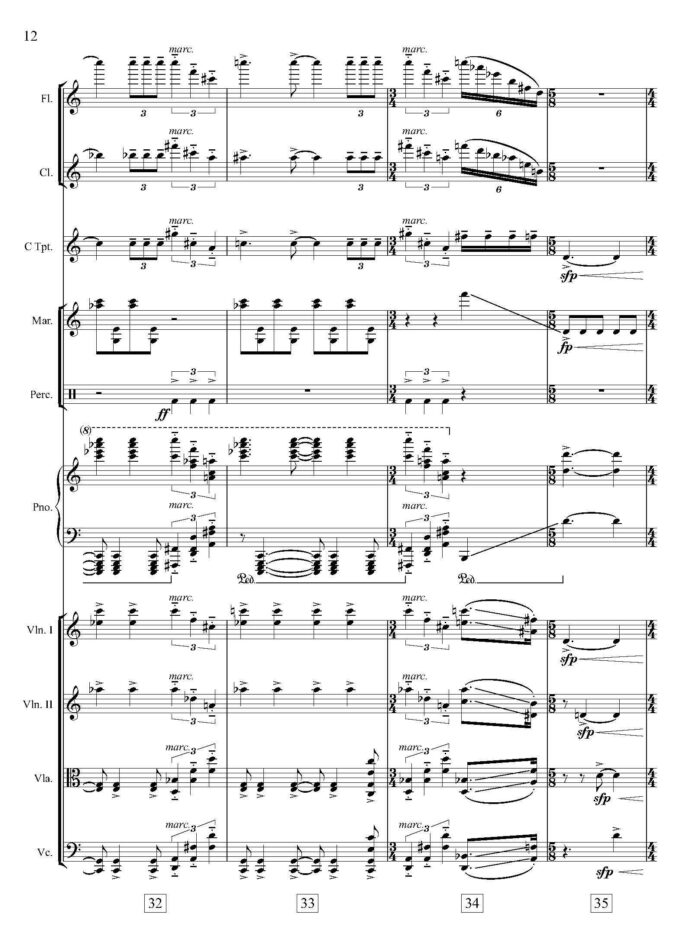Fractal Miniatures
by Roger Joseph Zare
Biography
The beauty and order of fractals never ceases to amaze me, from the simplicity of the Sierpinski Triangle to the incredible complexity within the Mandelbrot set. I am mesmerized by videos that zoom ad infinitum into one of these fractals, revealing the same shapes over and over, gradually transformed by subtle and complex processes. In Fractal Miniatures, I have strung eight short movements together that each reflect my impressions of various fractals, taking them as pieces of art.
The eight movements are arranged symmetrically, with the fifth movement as the focal point. The outer movements, named after the famous Sierpinski Triangle, are rhythmic and unyielding, pounding away at incessant rhythms through massive swells and dips. The second movement, flowsnake, is a spoonerism of snowflake, and is a simple space-filling fractal. This movement concentrates on sinewy flowing lines that spiral around one another. The third and seventh movements both open the same way, with the cello and percussion fading in ethereally into a pointillistic texture. The third movement, Newton Fractal continues this idea in a somewhat fitful manner, with various instruments taking turns with interjections. The seventh, Nova Fractal, is more linear, featuring a muted trumpet solo over an amorphous soup of string trills.
The fourth and sixth movements are named after the Dragon Curve, another space-filling curve. These two movements are abrupt and explosive, with sharp attacks and caustic gestures. They are also almost-exact mirror images of each other. The central movement of the set is named for arguably the most easily-recognized fractal, the Mandelbrot Set. Scored without percussion, the musical shape of this movement mimics the characteristic bulbous shape of the fractal. An underlying ostinato in 7/8 sets the stage for soaring lines and expansive harmonies.




